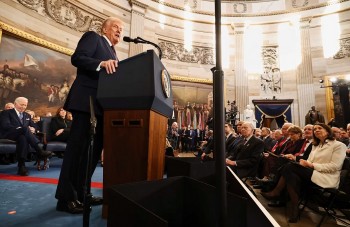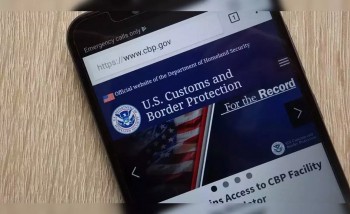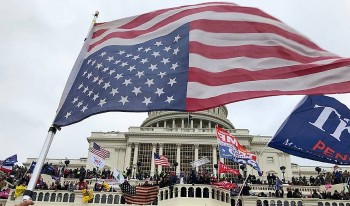What’s Happening at Mexico Border After the National Emergency by Trump
This article explores the meaning of a national emergency, the immediate consequences of this declaration, and answers frequently asked questions to clarify its implications.
What Is a National Emergency in the U.S.?
A national emergency is a declaration made by the President of the United States under the authority of the National Emergencies Act of 1976. It grants the President special powers to address urgent threats to the nation. Once declared, the President can activate specific statutes that would otherwise require Congressional approval.
Key aspects of a national emergency:
- Scope of Authority: The President can redirect federal funds, deploy military resources, and suspend or modify existing regulations to address the crisis.
- Duration: A national emergency remains in effect for one year unless renewed by the President or terminated by Congress.
- Legal and Congressional Oversight: Congress can terminate the emergency by passing a joint resolution, though this can be vetoed by the President.
In this case, President Trump is invoking emergency powers to enhance border security, bypassing legislative hurdles to allocate funds for the border wall, deploy troops, and implement stricter immigration controls.
 |
| What’s happening at Mexico border right now |
Key Policies and Measures Under the Emergency Declaration
President Trump's declaration includes several drastic measures:
- Immediate Funding for Border Security:
- Reallocating federal funds to resume construction of the border wall.
- Increasing resources for Border Patrol and immigration enforcement agencies.
- Military Deployment:
- Troops have been sent to reinforce border security, a move that has raised concerns about potential conflicts with the Posse Comitatus Act.
- Immigration Reforms:
- Ending birthright citizenship for children of undocumented immigrants.
- Resuming the "Remain in Mexico" policy, requiring asylum seekers to stay in Mexico during claim processing.
- Halting "catch and release" practices, ensuring that migrants remain in detention facilities until their cases are resolved.
- Deportations:
- Large-scale deportations, focusing on individuals with criminal records or recent arrivals.
Immediate Consequences
The national emergency declaration and policy shifts have set in motion several significant developments:
1. Humanitarian Crisis at the Border
Thousands of migrants who were relying on legal pathways to enter the U.S. now find themselves in limbo. The sudden policy changes have left many stranded in border cities like Tijuana, Ciudad Juárez, and Matamoros. Reports indicate an increase in overcrowded shelters, limited access to healthcare, and heightened exposure to violence, particularly in regions dominated by drug cartels.
Migrants, many of whom fled violence and economic instability in their home countries, now face an uncertain future. Families are particularly vulnerable, with women and children bearing the brunt of these hardships.
2. Militarization of the Border
The deployment of military forces to the border raises concerns about the militarization of immigration enforcement. While the administration asserts that this measure is necessary for national security, critics argue that it may lead to human rights violations and escalate tensions in border communities.
3. Legal Challenges
The declaration of a national emergency is expected to face significant legal scrutiny. Civil rights organizations and immigration advocacy groups have raised questions about the constitutionality of using military resources for immigration enforcement. Additionally, legal challenges are likely to target policies such as ending birthright citizenship and the reinstatement of the "Remain in Mexico" policy.
Impact on U.S.-Mexico Relations
The national emergency has strained relations between the U.S. and Mexico. President Trump has issued warnings to Mexico, demanding stricter measures to curb migration and fentanyl trafficking. In response, Mexican President Claudia Sheinbaum has declared a state of emergency in key border cities to prepare for the influx of deported migrants.
The U.S. has also threatened to impose tariffs on Mexican goods, potentially disrupting trade and economic stability. Mexico has expressed concerns that these measures could exacerbate existing challenges, including violence in border regions and the strain on humanitarian resources.
Current State of the Border
The U.S.-Mexico border is witnessing heightened tension and chaos. Key observations include:
-
Migrants in Crisis: Stranded migrants, many of whom had relied on the now-cancelled CBP One app, face bleak prospects. Shelters are overcrowded, and local authorities in Mexican border towns are struggling to manage the growing number of individuals in need of assistance.
-
Increased Border Patrol Activity: Border Patrol agents, reinforced by military personnel, are conducting intensified operations to prevent illegal crossings. This has led to a surge in apprehensions and an uptick in deportation proceedings.
-
Community Impact: Border communities on both sides are grappling with the ripple effects of the emergency measures. In the U.S., residents near the border express mixed reactions, with some supporting the increased security and others criticizing the humanitarian implications. In Mexico, local governments are overwhelmed by the sudden influx of migrants and deportees.
What Lies Ahead?
The situation at the U.S.-Mexico border is fluid and rapidly evolving. Here are some potential developments to watch for in the coming months:
1. Legal Battles
The use of emergency powers to implement sweeping immigration reforms will likely face intense legal scrutiny. Advocacy groups are expected to challenge these actions in court, potentially delaying their implementation.
2. Escalation of Humanitarian Concerns
Without coordinated international efforts, the humanitarian crisis is likely to worsen. The lack of clear legal pathways for migrants and the reinstatement of restrictive policies may drive more individuals to attempt dangerous, unauthorized crossings.
3. Economic Ramifications
The threatened tariffs on Mexican goods could have far-reaching economic consequences, affecting trade relations and supply chains. Businesses in both countries are closely monitoring the situation.
4. Political Fallout
Domestically, the administration's actions are likely to polarize public opinion further. While some Americans view the measures as necessary for national security, others see them as inhumane and counterproductive.
In Conclusion
President Trump's declaration of a national emergency at the U.S.-Mexico border represents a pivotal moment in U.S. immigration policy. While the administration argues that these measures are essential for securing the border and protecting American citizens, critics warn of dire humanitarian, legal, and political consequences. As the situation unfolds, the border will remain a focal point of national and international attention, with far-reaching implications for migrants, border communities, and U.S.-Mexico relations.
The coming weeks will test the resilience of institutions, the effectiveness of policy enforcement, and the capacity for humanitarian response in a deeply polarized landscape.
FAQs: National Emergency at the U.S.-Mexico Border
1. What does this national emergency mean for migrants?
Migrants will face stricter enforcement measures, including immediate deportations and limited access to legal entry pathways. Programs like the CBP One app, previously used to schedule asylum interviews, have been abruptly terminated, leaving thousands in limbo.
2. How will the border wall be funded under this emergency?
The declaration allows the President to redirect funds from other federal programs, including military construction projects and disaster relief, to finance the border wall. This move is likely to face legal challenges.
3. What is the "Remain in Mexico" policy, and why is it controversial?
The "Remain in Mexico" policy requires asylum seekers to wait in Mexico while their cases are processed in the U.S. Critics argue it exposes migrants to unsafe conditions, as many are forced to live in overcrowded and violent border towns.
4. How does the emergency affect U.S.-Mexico relations?
The emergency has strained diplomatic ties. President Trump has threatened tariffs on Mexican goods, while Mexican authorities have declared states of emergency in border cities to handle the influx of migrants.
5. Are there legal challenges to this declaration?
Yes, civil rights organizations and lawmakers are expected to challenge the declaration in court, questioning its legality and the broad use of presidential emergency powers.
6. What is the humanitarian impact of these measures?
Humanitarian organizations warn of worsening conditions for migrants, including overcrowded shelters, lack of access to healthcare, and exposure to violence. Families and vulnerable groups, such as women and children, are particularly affected.
7. Can Congress stop the national emergency?
Congress has the authority to pass a joint resolution to terminate the national emergency. However, the President can veto this resolution, requiring a two-thirds majority in both houses to override it.
8. How does this affect American border communities?
Border communities are experiencing heightened security measures, increased military presence, and economic uncertainty. Local governments and businesses are adapting to rapidly changing conditions.
9. How long will this emergency last?
The national emergency is valid for one year but can be renewed annually by the President. Congress also has the power to terminate it, though this is subject to political dynamics.
10. What happens next?
The situation will evolve as legal challenges are filed, policies are implemented, and diplomatic relations with Mexico develop. The coming months will reveal the full impact of the emergency on migrants, border communities, and U.S. governance.
 Trump's Speech: Full Text and Key Moments from 2025 Inauguration Transcript Trump's Speech: Full Text and Key Moments from 2025 Inauguration Transcript After being sworn in at the U.S. Capitol Rotunda, the 47th president gave an inaugural address that lasted about 30 minutes. |
 CBP One App Terminated: Trump’s Bold Move to Reshape U.S. Immigration Policy CBP One App Terminated: Trump’s Bold Move to Reshape U.S. Immigration Policy In a significant move that underscores a dramatic shift in U.S. immigration policy, the Trump administration has officially terminated the use of the CBP One ... |
 Awkward Moment: Trump's Kiss Blocked by Melania’s Bold Hat Awkward Moment: Trump's Kiss Blocked by Melania’s Bold Hat Melania's hat prevented Donald Trump from kissing her during his inauguration, which resulted in a social media sensation. |
 Who Was Pardoned and Commutated by Trump in His First Day as President Who Was Pardoned and Commutated by Trump in His First Day as President On his first day back in the White House after being sworn in for a second term, President Donald Trump made headlines by granting clemency ... |

























